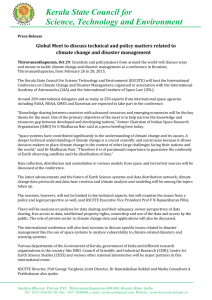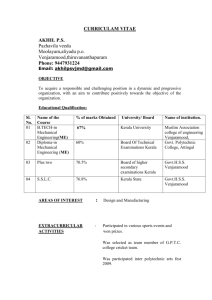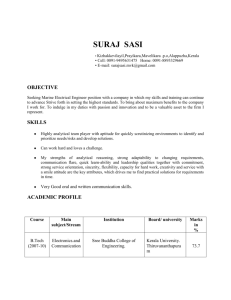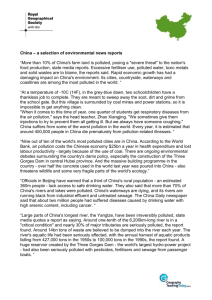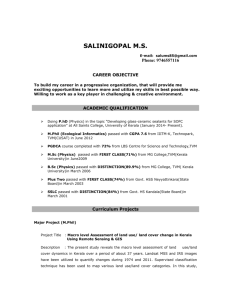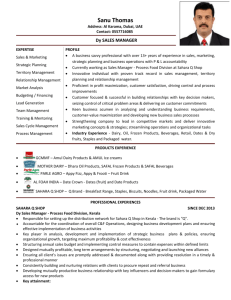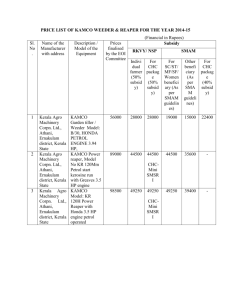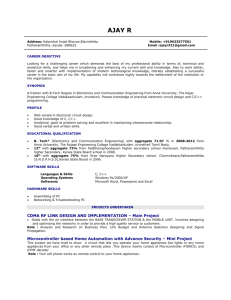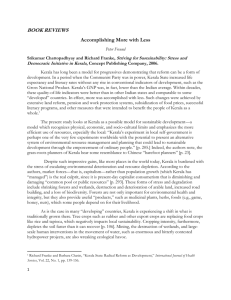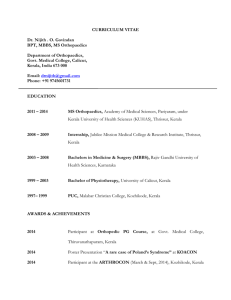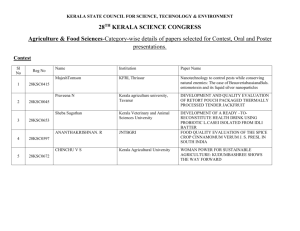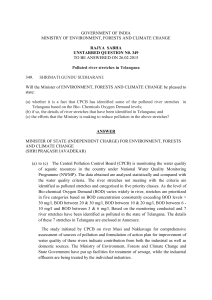polluted flows
advertisement
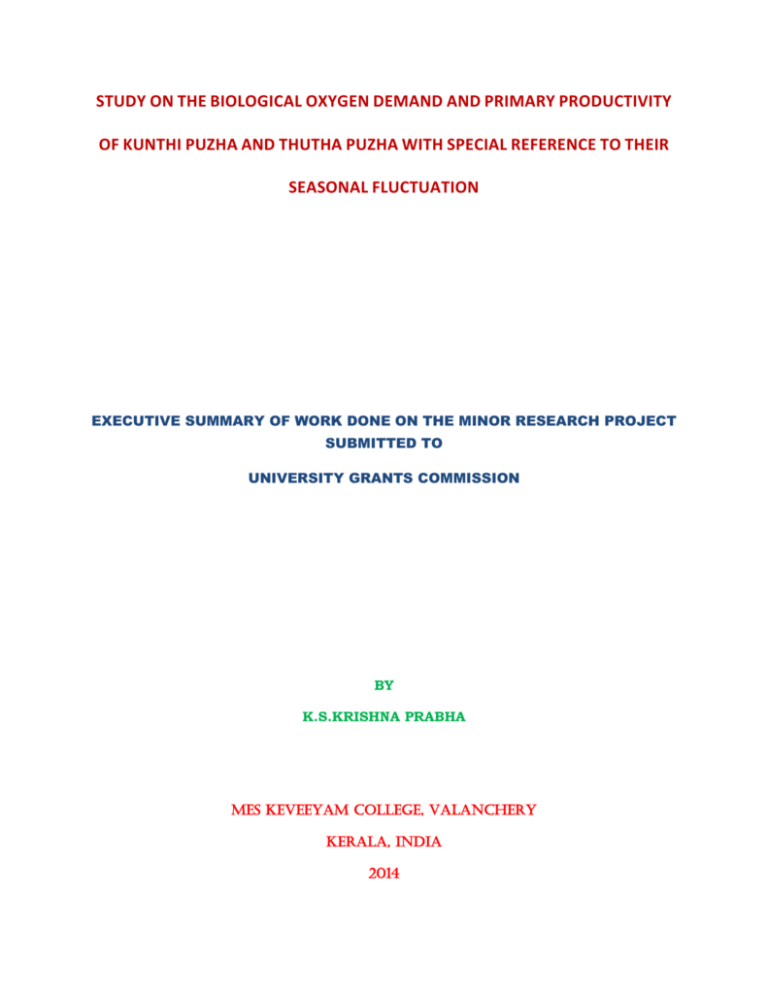
STUDY ON THE BIOLOGICAL OXYGEN DEMAND AND PRIMARY PRODUCTIVITY OF KUNTHI PUZHA AND THUTHA PUZHA WITH SPECIAL REFERENCE TO THEIR SEASONAL FLUCTUATION EXECUTIVE SUMMARY OF WORK DONE ON THE MINOR RESEARCH PROJECT SUBMITTED TO UNIVERSITY GRANTS COMMISSION BY K.S.KRISHNA PRABHA MES KEVEEYAM COLLEGE, VaLANCHERY KERALA, INDIA 2014 The mere existence of earth depends on the availability of fresh water. Fresh water ecosystems provide nutrient rich food, water and other resources to man. They are the homes to diverse organisms. Rivers all over the world are deteriorating rapidly due to anthropogenic interferences. Many of the rivers no longer provide the goods and services they used to provide some years back. Kerala, the land of rivers, has a cultural history that is closely intertwined with the river valley social life. Silent Valley is the only vestige of near virgin forest in the whole of Western Ghats. It is estimated to have a continuous record of not less than 50 million years of evolution. Kunthipuzha originating from the Silent valley is considered as a least polluted river in Kerala based on the studies conducted in the upstream. Studies on anthropogenic stress are not conducted much on the down streams where the human settlement starts. Thuthapuzha, one of the tributaries of Bharathapuzha River which is the second largest river in Kerala state. At Karivanoor it joins with the Bharatapuzha River. The paucity of studies on the down streams has been the motivation to undertake the work. In the present work, Kunthi River starting from Sairandhri to Thiruvegappura of Thutha River after which the river merges with the Bharathapuzha was selected as the study area. Sairandhri, Mannarkkad, Pulamanthole and Thiruvegappura were the collection sites. The total distance from Ist station to the last is about 93.66 Km. The approximate distance between the stations are 31.22Km. Water samples were collected seasonally and analysed. Kunthi river is considered as the least polluted river in the state mainly due to the 15 Km upstream which runs entirely through the evergreen forest of Silent valley completely untouched by human. The river Thutha is also free from high pollution because it flows mainly through the rural areas away from major towns. The current study reveals that only at Pulamanthole the river exceeded the normal BIS value of BOD. This may be the influence of the sewage and other wastes from the town along which it flows. The primary production and Chlorophyll a concentration was also high in this station in tune with the high BOD and nutrient content of the river. The TC was also highest in the area. The influx of workers from outside state contributes much to make such a situation in the river. The dumping of chicken wastes to the river is also customary in the area. Unless and until strong measures are undertaken the river, which is considered to be the least polluted, will regress to a polluted one. This is the only tributary of Bharathapuzha which supplies water throughout the year. It is the sole source of water for drinking, irrigation, bathing and other activities for thousands of people residing on its bank. Information on environment should form an integrated part of the school curriculum so as to enable children to understand the inter dependence of various components of the system of which they form a part. Mass media could be used for publicizing the facts and providing information of the environment. In the era of water scarcity and in the light that the scarceness of water is to increase in the eras to come, the conservation of any fresh water source is the utmost importance and urgent need of the hour.
